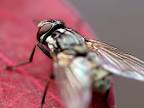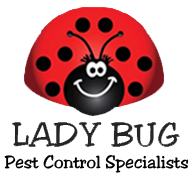
More than 100 pathogens are associated with the house fly including: Salmonella, Staphylococcus, E. Coli and Shigella. These pathogens can cause disease in humans and animals, including: typhoid fever, cholera, bacillary dysentery, hepatitis, ophthalmia, polio, tuberculosis and infantile diarrhea.
Sanitation is critical to controlling these pests, but accurate identification is essential for successful fly control. Here are some other things you should know about flies and fly control:
• Depending on the species, the life expectancy of a fly is eight days to two months, or in some cases, up to a year.
• Flies belong to the Order Diptera, meaning two wings. There are 16,000 species of flies in North America.
• Flies plague every part of the world except the polar ice caps.
• One pair of flies can produce more than 1 million offspring in as little as six to eight weeks.
• As many as 33 million microorganisms may flourish in a single fly’s gut, while a half-billion more swarm over its body and legs.
• Flies spread diseases readily because they move quickly from rotting, disease-laden garbage to exposed human foods and utensils.
• Because they only have two wings, flies land often and therefore can deposit thousands of bacteria each time they land.
• U.S. Department of Agriculture sources reveal that flies contaminate or destroy $10 billion worth of agricultural products.
• For every fly seen, there are an estimated 19 more hidden from view. This means humans don’t even see most of the flies present at an infestation.
• They prefer corners and edges or thin objects to rest on. Indoors, they rest on floors, walls and ceilings during the day. Outdoors, they will rest on plants, the ground, fence wires, garbage cans, etc. Night resting places are usually near sources of food and 5 to 15 feet off the ground.
• A wide variety of food, including human food, animal food and carcasses, garbage and excrement.
• House fly eggs are laid in almost any warm, moist material that will supply suitable food for the larvae. The female begins laying eggs a few days after hatching, laying a total of five to six batches of 75 to 100 eggs. In warm weather, eggs hatch in 12 to 24 hours.
House flies can be real nuisances when they are flying around. But they can also transmit diseases, so it is important to get rid of them. House fly control is not always as easy as it sounds. There is often more involved than a fly swatter.
After reducing conditions that attract flies outside (e.g. pooper scoop dog and other animal waste, get tight fitting lids for any open garbage pails), a fly trap can be purchased at a local hardware store to attract flies into a bag that they cannot get back out of. Hang these bags away from the patio areas so you do not attract flies closer to your home. Lady Bug Eco-Friendly Pest Control will have a variety of tools available to treat correctly. Lady Bug also has spray products that do exceptionally well on the outside of the home to kill flies.
Contact Lady Bug Pest Control Specialists for a Free Home Inspection for Termites, Eco-Friendly Pest Control, Home Seal Service, Bed Bug Eco-Heat, and Rodent Control. We perform Complete Home Inspections. Lady Bug also will do a free inspection if you already are under contract with another company and take over your existing termite warranty policy.
Please feel free to contact Lady Bug Pest Control Specialists to answer any of your pest control questions or for a FREE Inspection at 480-833-1111.







